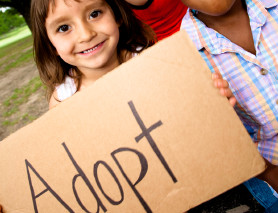This is a clip from an episode of Life Report called “Local Experts Clarify Domestic and International Adoption.” In this episode I interviewed Stephanie Grant, Executive Director of Infant of Prague Adoption Services, and Laurel Boylan, Founder of God’s Waiting Children.
In this clip, I asked them to explain how adopting children from the foster care system works.
[youtube http://www.youtube.com/watch?v=6lAcJLfyY7o&version=3&hl=en_US&start=1346]
Click the embedded video and it will start at the right place in the interview. This particular topic ends at 25:41.
If you don’t want to watch the 3-minute video, you can read the full transcript below.
Transcript:
Josh Brahm: Stephanie, talk to us about the foster care-adoption process. You’ve worked in that. There are a few families in my church that are going through this right now, and seeing that, suddenly it makes me feel like, “Wow! This seems more possible then maybe I thought before.” So help us understand what that process is like.
 Stephanie Grant: Absolutely. And there’s such a need for kids, like I said before, that aren’t going to be reunified with their families. Long-term foster care is not a great way to grow up at all. And so, [you want] to have that permanent home, having that family that’s saying, “Hey, we’re committed to you.”
Stephanie Grant: Absolutely. And there’s such a need for kids, like I said before, that aren’t going to be reunified with their families. Long-term foster care is not a great way to grow up at all. And so, [you want] to have that permanent home, having that family that’s saying, “Hey, we’re committed to you.”
And for people that want to adopt out of the foster care system, they can connect with a Foster Family Agency. There’s a lot of great Foster Family Agencies with adoption licenses now in our greater area.
Or they could go directly to a county and become a fost-adopt home. Typically the process is pretty much the same as far as the home inspection, they have to meet the same criteria as our adoptive families do. The county or the FFA workers going to find out what type of child or sibling group that they’re open to and they will, when a group or when the child becomes available, they’ll let them know.
There’s encouragement in place now to adopt kids that are in the system that aren’t going to reunify, and so now foster care money continues through the Adoption Assistance Program, we call it AAP. So there’s funding that continues until the child’s 18, plus they can stay on MediCal if the family chooses. Really, through the foster care system there’s very limited fees that the family will pay.
Josh Brahm: Right, so it’s much less expensive, and we’re doing that because there’s all these kids in the system and we want to get them out, obviously before they turn 18.
Stephanie Grant: There are times that an infant can be placed — I mean, if a mom has prior history with CPS and delivers a drug-exposed infant to the hospital, those type of situations, but most of the time with fost-adopt you’re going to have a toddler, two or three and up, you know. It’s not going to be an infant.
Josh Brahm: But it seems like the older the kid, the more want to get them out of that system and get them somewhere permanent to help them.
Stephanie Grant: Right, absolutely, and then being open to sibling groups, too. There is such a need for that. Keeping kids together.
Laurel Boylan: When we founded God’s Waiting Children our original mission was only to focus on children over the age of six, and the reason for that was we felt that it wasn’t as difficult to find adoptive families opening their homes to the younger ones but once a child reaches the school age, a lot of families just feel like it’s too late, or they just think it’d be too hard, so our last eight years has been spent advocating for “the older child,” which is school age, six or older. Though we do do infant adoptions. Sergei’s only two, the one who is in Russia, waiting.
Download Full Interview (MP3) | 00:28:00
Life Report trains pro-life people to communicate their views more effectively. Through round-table discussions and interviews with the top experts on the subject, Life Report provides real-world answers to the toughest questions regarding abortion in the 21st century. Follow them on Facebook or Twitter.
Special thanks to Benjamin Baxter for the transcription.







